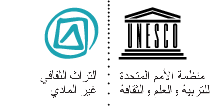Taekkyeon, a traditional Korean martial art (جاري عملية الترجمة)
سجل في 2011 (6.COM) على القائمة التمثيلية للتراث الثقافي غير المادي للبشرية
بلد(ان): جمهورية كوريا
تعريف
Description

- Taekkyeon, a traditional Korean martial art
- © 1998 by Cultural Heritage Administration
عذراً، هذه الصفحة غير متوفرة باللغة العربية
Taekkyeon is a traditional Korean martial art that makes use of fluid, rhythmic dance-like movements to strike or trip up an opponent. The graceful movements of a well-trained Taekkyeon performer are gentle and circular rather than straight and rigid, but can explode with enormous flexibility and strength. The feet play as important a role as the hands. In spite of its gentle impression, Taekkyeon is an effective martial art highlighting a broad variety of offensive and defensive skills employing all available fighting methods. It also teaches consideration: a skilled Taekkyeon practitioner can rapidly dominate an opponent, but a true master knows how to make an opponent withdraw without incurring damage. As a part of seasonal farming-related traditions, Taekkyeon serves to facilitate community integration, and as a sport accessible to all plays a major role in promoting public health. Taekkyeon is also practised by a great number of people as a daily activity. There are approximately fifty recognized practitioners of Taekkyeon at present, and the Korean Taekkyeon Association plays a significant role in the transmission and promotion of this traditional martial art.مستندات
عرض الشرائح
فيديو
© 2009 by Cultural Heritage Administration of the Republic of Korea
يمكن استعراض مقاطع الفيديو هذه (بالإضافة إلى العديد غيرها) من خلال موقع أرشيف اليونسكو للملتميديا”





















